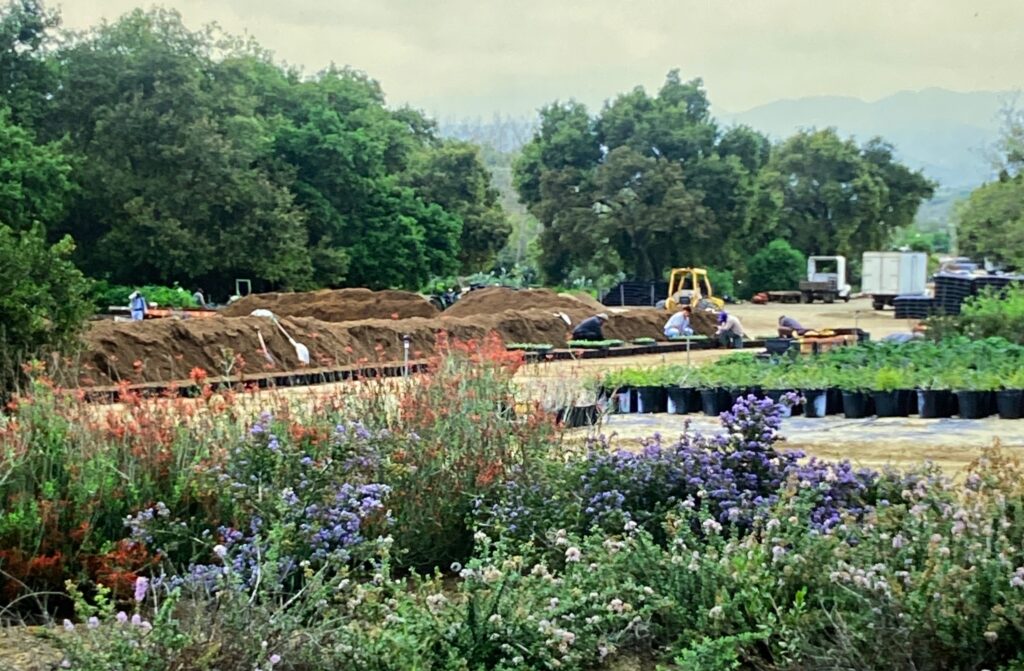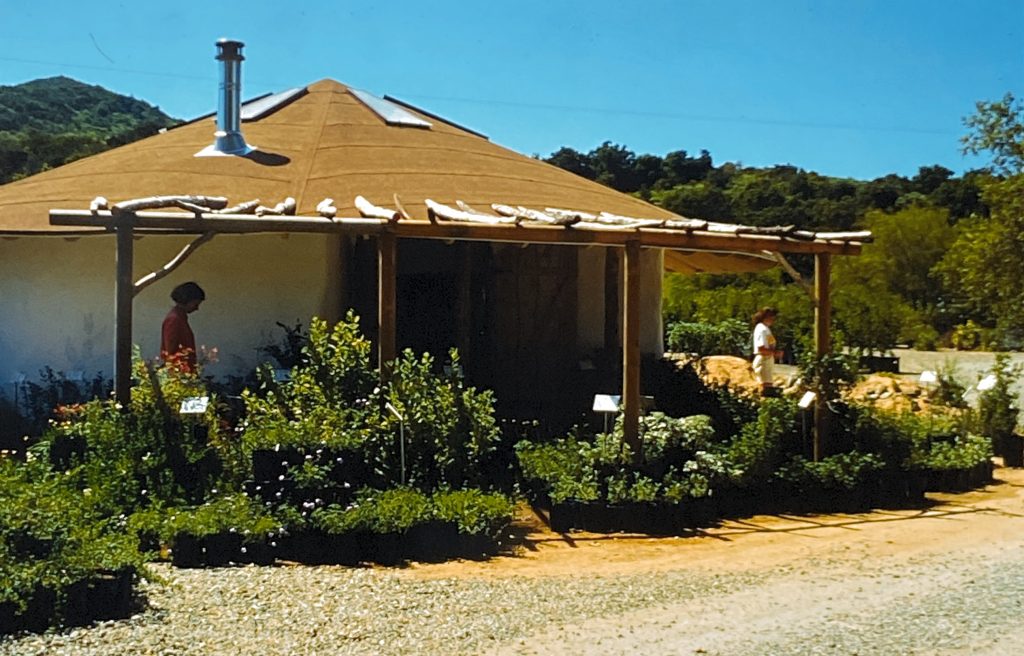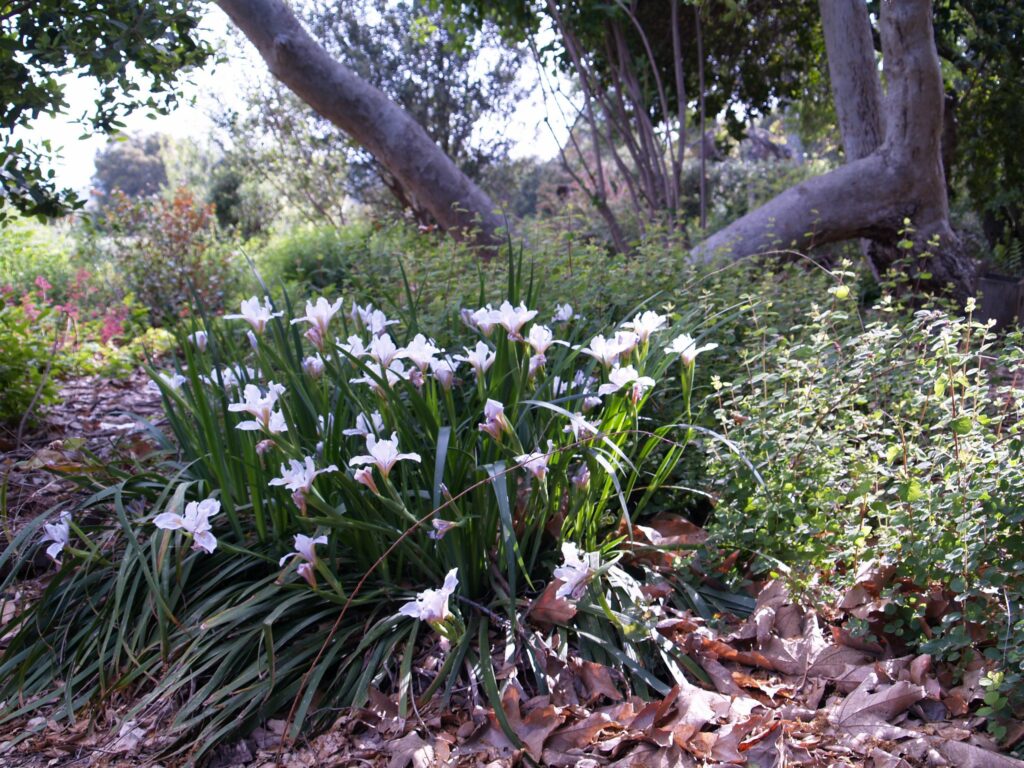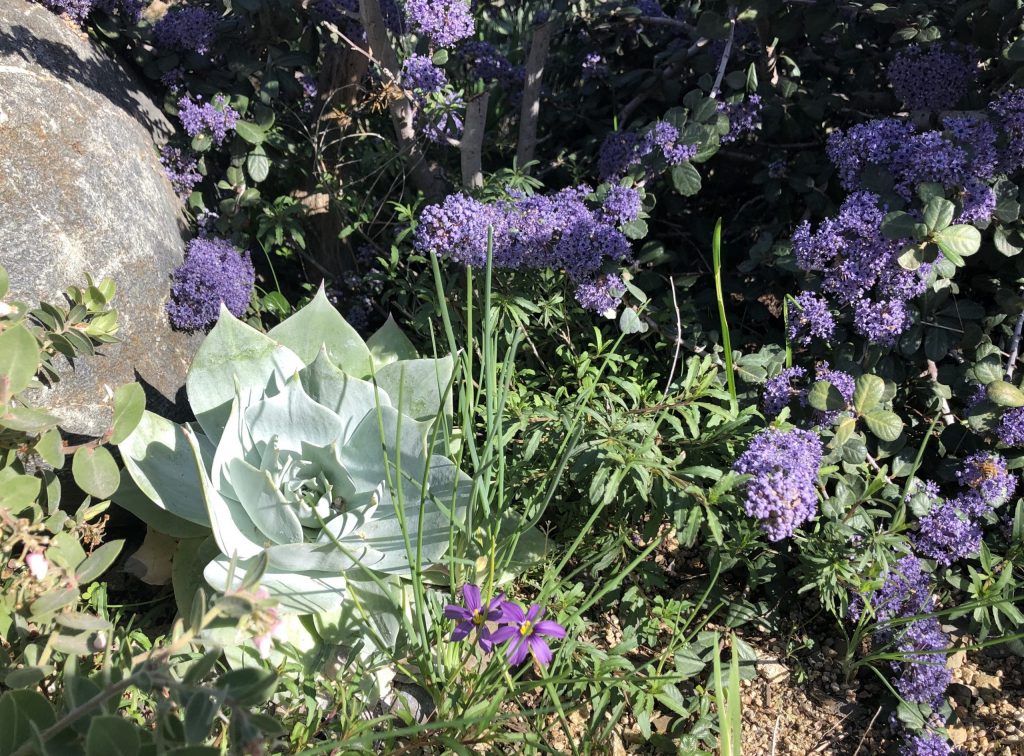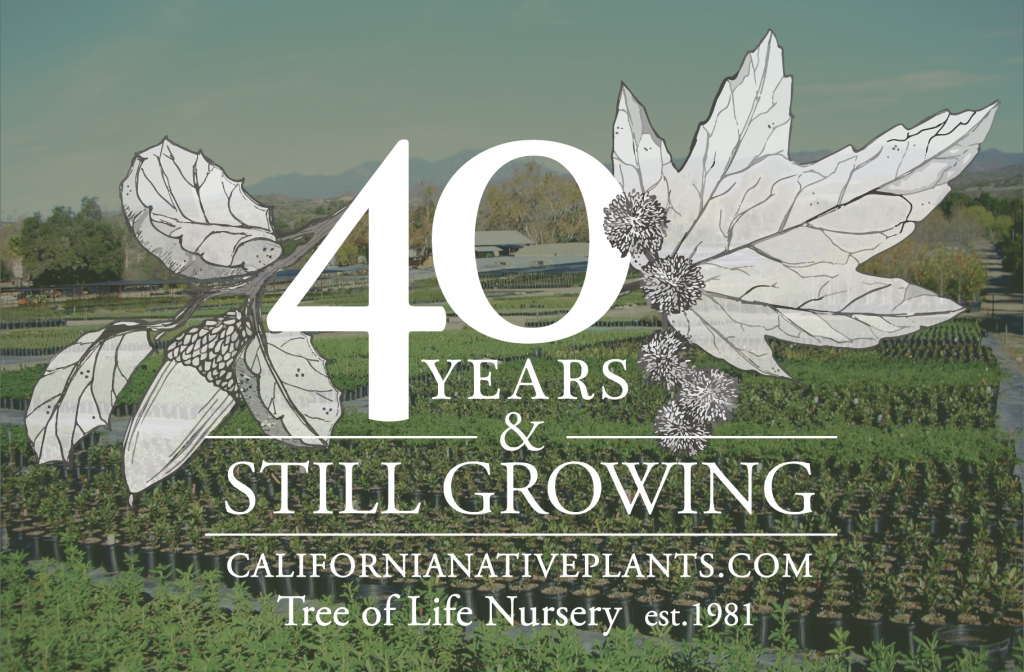
The story of Tree of Life Nursery is really a story of people and passion. And plants. California native plants and the land we occupy for growing, plus our team of friends and colleagues, including our loyal customers. 2021 marks the official 40-year anniversary of the partnership between the owners Jeff Bohn and Mike Evans. Mike founded the original company under the name Tree of Life Nursery and Landscape in 1977. Through a mutual friend and native plant expert, Mr. Art Tyree, (who learned from Mr. Theodore Payne himself) Jeff and Mike met in 1979 and discovered they had a lot in common; beach culture, surfing, the outdoor life, functional landscapes, sustainable gardens, landscape design, nursery experience, and a love for California native plants. Their story of building a nursery, a business, and a lifestyle will be told in a series of monthly essays to be published through 2021.
Essay #2, April 2021 – The Passion & the Plants We Grow by Mike Evans
Unlike many farmers, we knew what we wanted to grow before we had the land to grow on. Some might buy or inherit land and then wonder what to grow, and how to do it. Forty years ago, we were certain of our goal to operate a nursery specializing in California native plants.
By no means were we the first. Great horticultural heroes in every region of California had pioneered the idea of native plants for garden use, particularly in the San Francisco Bay Area, Santa Barbara, Los Angeles, and San Diego. Their impacts in the early through mid twentieth century left a lasting legacy for natural gardening. But California’s Post War population boom, rampant growth, and the concurrent availability of abundant imported water ushered in a period of gaudy and exotic garden themes, continuing through the 50’s 60’s and 70’s. The still small voice for natives had been all but silenced by a new thing called the “green industry.”
Quietly, with more passion than fanfare, a few native plant enthusiasts in each region began to pick up where the pioneers had left off. We believe that had been our calling in our region when we started in the late 1970’s.
Geographically, biologically, environmentally, and from the standpoint of all nature, including, topography, geology, hydrology, and climate, California is simply stated, one of the most unique places on earth. Why not celebrate her natural beauty, as well as her rich natural and cultural history by placing native plants front and center in our lives? We believed this back then and we believe it today.
Our state is home to more than 5000 native plant taxa (species and subspecies). This incredible number speaks to the incredible diversity in this, our Mediterranean climate zone. Even more extraordinary is the fact that more than half those 5000 are endemic, meaning they occur only in California. Add to all this that a great many plants are strikingly attractive and sought after around the globe, and you’re presented with a diverse, unique, and gorgeous group of plants that should be in every California garden. Why? Because they are beautiful, and also because California deserves to look like California. This too we believed back then and we believe it today.
At our start, when we told people we grew natives, some would curl their lip and say with great disdain, “You mean succulents?” Back then, succulents were considered inferior alternatives to the components for a “real garden,” one overflowing with bedding plants, flowering shrubs, tropicals and other water guzzlers. After all, why plant succulents when you can have begonias? We would answer, “No, no, not succulents… native plants… manzanitas, ceanothus, sages, oaks, and suchlike.” Often a blank stare. Other times an, “Oh, that sounds cool.”
But after the 1976 drought, landscapes were targeted as places to conserve water, and natives became an obvious choice, much preferred over any disgustingly simple succulent. Could this have been the perfect time for natives to become commonplace in the landscape? Unfortunately, no.
Many non-native plants were being heavily promoted as essentially “drought tolerant” and therefore best for water saving in the landscape. They hailed from Australia, South Africa, the Mediterranean, and Chile and were touted as appropriate because they came from regions with similar climates. But they were not appropriate choices, since California’s flora is rich, diverse, and beautiful on its own. No substitutes needed. The plants and plantings are basically useless to wildlife, but this fact went largely ignored by the promoters. And they are not adapted to our unique climate.
We could have sold a million rosemary, ground cover acacia, myoporum, butterfly iris, exotic weedy bunchgrasses, etc. etc. etc., but our passion was greater than any sort of business acumen that would have insisted on a compromise. Oh, the ugly temptation! Let’s see… new business… functional nursery… we could grow acacia instead of manzanita… take lots of orders… make lots of money… etc. etc. etc. But passion comes from heart, and heart touches on conscience, and a clean conscience allows for sound sleep. So we stayed lean but slept well. And promoted natives as the only viable choice for sustainable landscapes.
Besides, we like challenges. We have consistently produced between 300 and 400 different native varieties, many of which are extremely difficult to propagate. Could this be a rarely mentioned reason they are so scarce in the nursery industry?
More recently, (for the last 10-12 years or so), had we wanted our place on the easy money bandwagon, we would have grown (of all things) succulents. They are currently promoted as a feasible choice for landscape water savings, and they are the most unchallenging things in the world to mass produce. They are far from “drought tolerant.” In the landscape, they need continuously moist soil, and prefer shade. Succulents are popular because nurseries can grow a million of them with their eyes closed, and make them available everywhere. And oh yeah, pretty much zero habitat value. Honestly, this time around we never felt tempted in the least. The community of native plant lovers is strong, and we are accountable to each other. (By the way, there is a native succulent, Dudleya, and we grow numerous species for use in accenting the natural garden.)
All the while, the voice for native plants is not silenced but remains alive and well, mostly because what people really want (need) is nature, wildlife, songbirds, beneficial insects, seasonal fragrance, butterflies, habitat, hummingbirds, lizards, connection, meaning, wonder, frogs, memories, hope, beauty, interpretation, ceremony, authenticity, and sustainable life in their natural gardens. They want places where they can engage.
The fact that theirs need far less water than any landscape, including one with so-called “drought tolerant” exotics (even succulents), is secondary to the real reasons they plant natives:
Why paste an artificial look onto a land as amazing as California? Why not increase habitat value all around us, given that so much is being lost so fast everywhere? And, what are gardens for anyway, if not for connection, engaging, healing, restoration, and renewal? Only nature can provide that.
For over forty years both our crop inventory and our message have stayed true to our passion for native plants. We are honored to be partnering with so many like minded souls who still believe California deserves to look like California.
